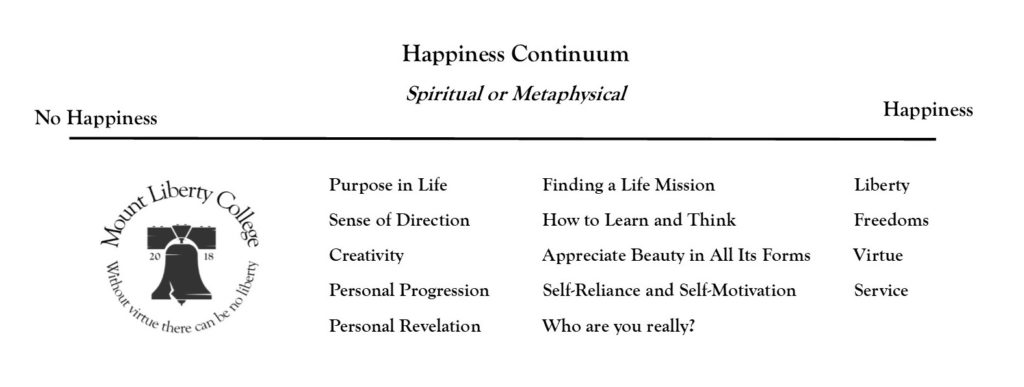We are taught continually, from schools to movies to advertising, that an education, a career with good pay and a few perks, will bring us happiness. Many of us follow this model religiously but in the end, find ourselves not really happier than we were before. We have more money, more vacations, more toys, but not really more happiness. What these groups forget to teach us is that this continuum we’re on does not really have happiness as the end goal; we just think it does. I call this continuum the Pain Avoidance Continuum. It’s not really about being happy, it’s about avoiding pain. We brush our teeth to stop from getting cavities; we eat healthy and try to be active to keep our health as long as we can; we make money to not have the pain of being destitute and starving. But not starving doesn’t bring happiness. I never once think, “Oh, I’m not starving to death today; I am so happy.” Happiness seems much more elusive than this.

What we haven’t been taught is that happiness, or joy, or contentment, whatever you prefer to call it, lives on another continuum altogether. This higher continuum isn’t about pain avoidance but rather about creating happiness in our lives. It isn’t just about a job and good pay, it’s about finding what we’re good at, pursuing a purpose, discovering our mission, using our creativity and liberty to learn and grow and become who we know we can be. This is where happiness is. But it takes looking beyond the day-to-day physical activities we do.

Part of this path to happiness needs to include our love for God and humanity. As we love God and learn to follow Him, through His spiritual guidance we can be led to what we personally need to do to be happy. Our love of humanity plays a role through charity and service but also through gaining a better understanding of human nature and how people work. When we love others, we want to help them and we in turn help ourselves.
As we learn and become better educated in history through the classics and great books of the world, our understanding will increase and we will better comprehend ourselves and the people around us. This education also helps cement our understanding of Natural Law and how this concept is really the basis for all the things that happen every day. Every action and choice we make brings some sort of consequence for good or bad. To understand this and how it works is a very important part of our education and our understanding of how to remain on the Happiness Continuum.
Because we are constantly bombarded with messages telling us those items on the Pain Avoidance Continuum can make us happy, most of us live there and don’t even realize there is another place to be if we truly want to find happiness. The Pain Avoidance Continuum, which comprises the physical world, is a necessary part of life; we can’t ignore it. But to focus on it at the exclusion of the Happiness Continuum, which comprises the spiritual or metaphysical world, means we miss out on a lot.
As we make sure we are working on items found on the Happiness Continuum, we will be able to find what we are searching for; happiness and contentment. And somehow when we are working towards our goals, when we are caring for others, when we are trying to follow God, we become happy without even realizing it. Because happiness is actually not something that we can reach for on its own, but rather something we achieve as a byproduct of finding purpose in life and acting on that purpose.
Jennifer Jensen Ph.D.: BA, Design, Brigham Young University; MA, Political Economy, George Wythe College; Ph.D., Constitutional Studies, George Wythe University; Trustee and faculty; Mount Liberty College, Adjunct Faculty and Graduate Dean, George Wythe University, Adjunct Faculty, BYU-Idaho, Board Member and blogger for Gathering Families, author of Raising Intentional Parents, volunteer with various political organizations, and homeschool mom of 25 years. Find her at: MountLibertyCollege.org

Absolutely true! Thank you for the visual of the two continuum’s. Sharing this with my children!!